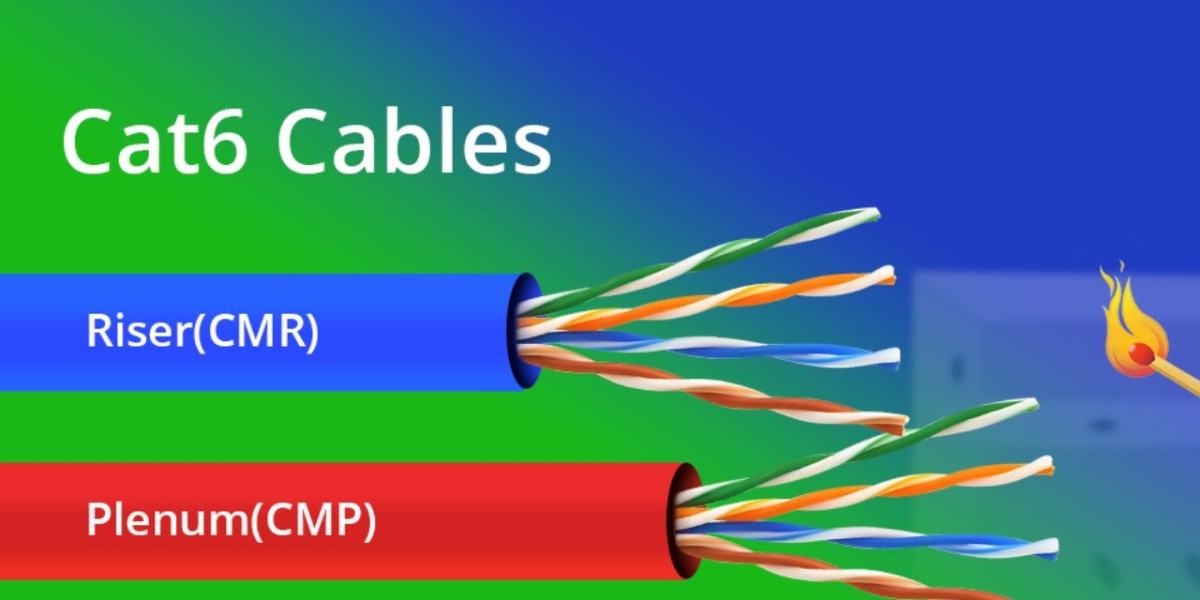For fast networking, you are aware of the wired cable also known as LAN or Ethernet cables. Why else would you be reading this? Now, if you don’t know, the increasing demand for ethernet cables, particularly, the Cat6 Ethernet Cable is due to its unmatched performance and affordability.
But the Bulk Cat6 Ethernet Cable comes in different variants. There are shielded ethernet cables, unshielded, and most importantly, Plenum or Riser. Now, which one do you need is the question that we will answer in this article.
But first, let’s briefly explain what exactly a Cat6 ethernet cable is.
Category 6 Ethernet Network Cable
This is the 6th Category of ethernet cables which was introduced as an improved version of the Cat5e and Cat5 cables. It features 4 twisted pairs of conductor wires and the twists are key to its high performance. Also, the twists in this cable are more per unit length as compared to its previous counterparts - Cat5 and 5e.
Performance-wise, the Cat6 cable is one of the best LAN cables you can get. It has a whopping bandwidth capacity of 550 MHz with a data transfer speed of up to 1 Gbps over 100 meters or 328 feet. And it comes with two different jackets to choose from: Plenum and Riser. The cable is also known for its 10GBASE-T applications as for shorter lengths the cable delivers 10 Gbps speed which can be suitable for running fast ethernet applications.
Plenum and Riser are cable jackets designed for indoor installation purposes and they are used in the space for which they are designed. The performance of the cable will remain the same on all types except their resistance to external factors such as humidity, extremely warm and cold weather, etc. We will look into this in more detail in the next part.
Cat6 Plenum Cable
Cat6 Plenum Ethernet Cable 1000ft is like any other category 6 ethernet cable but a communications multipurpose plenum (CMP) jacket. And because of this jacket, it finds its use in specific applications.
It is used in indoor heating, ventilation, and air conditioning (HVAC) ducts. These spaces such as raised floors or dropped ceilings where HVAC ducts are installed are also known as plenum spaces.
Cat6 plenum ethernet cable is designed to be installed in these spaces because a fire hazard can put human lives and property at risk. The low smoke zero halogens (LSZH) materials used in the jacket of this material do not emit toxic smoke and actively prevent fire from propagating along the cable.
Cat6 Riser Cable
You will need the Cat6 Riser Cable for indoor enclosed spaces such as inside walls, between floors, elevator shafts, etc. These cable jackets are designed to limit the propagation of fire but can emit toxic smoke if they catch flame.
PVC is short for Polyvinyl Chloride and the Cat6 PVC cable is a cost-effective solution for outdoor networking cable runs. Also, this cable is installed in temporary runs. Needless to say, due to its cheap price, it can catch fire when overheated and also emits toxic smoke - which is why it is not recommended for indoor spaces.
Cat6 Shielded vs Unshielded Cable?
At this point, you should know the type of Cat6 Ethernet cable you need - which is pretty simple. A Cat6 plenum for indoor plenum spaces, a riser for indoor enclosed spaces, and a PVC for outdoors and temporary installations.
The next factor you need to know is the cable shielding. Cable shielding, as the name implies, is a thin metal foil that is wrapped around the cable conductors to prevent electromagnetic interference (EMI) and external noise from interfering with the cable’s signal transmission.
But do you need a shielded Cat6 or an unshielded one? That depends on what the cable density in your local area network is like. If you have a commercial LAN network with a lot of cables, you need a shielded cable for guaranteed high performance.
But if you will be installing the cable in a home network, you can use an unshielded Cat6 without worrying about interference.
Cat6 Bare Copper vs CCA cable?
Lastly, you will have to decide whether you need a bare copper Cat6 or a copper-clad aluminum one.
Note that the bare copper Cat6 cable is more efficient at transmitting data. It is also a ductile and flexible material which makes it easier to install.
The CCA cable, on the other hand, can be brittle. It is a decent choice if you are looking for an affordable solution, but it is not ideal for a fully-fledged high-performance LAN network.
Also, the CCA cable does not support PoE and PoE+/++ applications which makes it less desirable for business and home security applications.
Conclusion
In a nutshell, you need a Cat6 plenum cable for indoor open spaces such as dropped ceilings and raised floors. A Riser will be used in spaces such as between floors and in vertical elevator shafts. Finally, a PVC Cat6 is the option you have if you are looking for an affordable and temporary solution.
Sometimes you need to install ethernet cables which are already active with strong interference due to the presence of electric wires. For that Cat6 shielded cables always work. Keep in mind that your buying decision will depend on the cable's performance and reliability. If you ignore the factors that might prove to be costly later.



